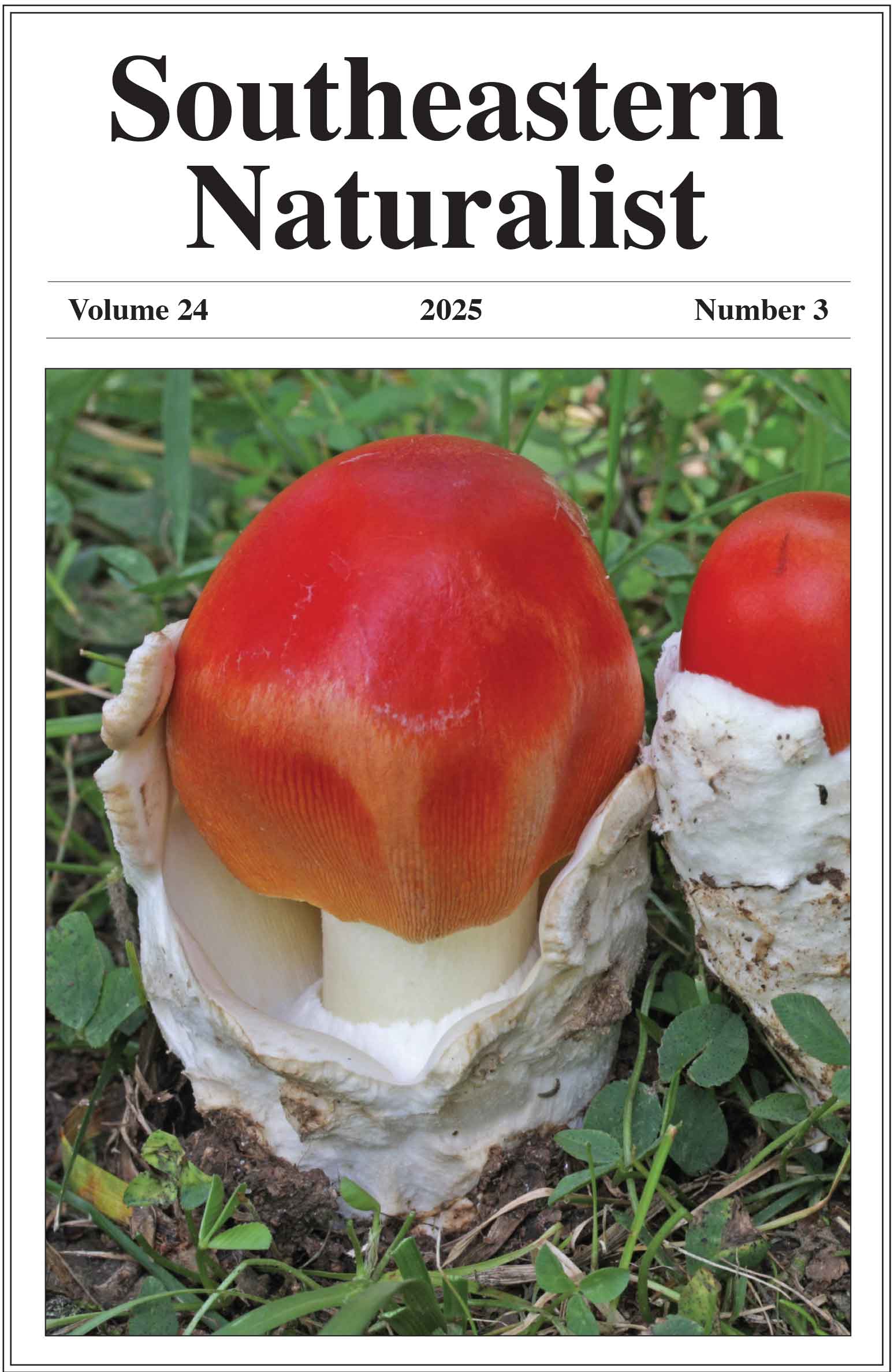Wild Pig Resource Selection in an Agro-Forested Landscape of Southwestern Georgia, USA
Faith E. Kruis1,2,3, Daniel A. Crawford1,2, Michael T. Mengak1, and L. Mike Conner2,*
1Warnell School of Forestry and Natural Resources, University of Georgia, 180 E Green Street, Athens, GA 30602. 2The Jones Center at Ichauway, 3988 Jones Center Drive, Newton, GA 39870. 3Current address - Department of Wildlife Ecology and Conservation 110 Newins-Ziegler Hall, Gainesville, FL 32611. *Corresponding author.
Southeastern Naturalist, Volume 24, Issue 2 (2025): 184–199
First published early online: 25 June 2025
Abstract
Sus scrofa L. (Wild Pig) are invasive, found throughout much of the US, and annually cause $1.5–2.2 billion in damage to natural and agricultural resources. Understanding habitat selection by Wild Pigs may inform control efforts by allowing managers to target their removal in frequently used habitats. Therefore, we used GPS tracking collars to study resource selection by Wild Pigs within their home ranges in an agro-forested landscape in southwestern Georgia, USA, during 2021–2023. Both sexes showed a greater probability of selecting areas near forested wetlands/riparian zones during both seasons, making this the most consistently selected landcover type. During the growing season (May–October), female Wild Pigs also showed a greater probability of selecting areas near unpaved roads but a lower probability of selecting areas near upland forests; during the dormant season (November–April), they showed a greater probability of selecting areas near upland forests and paved roads but a lower probability of selecting areas near unpaved roads, cropland, and buildings. In addition to forested wetlands/riparian zones, males showed a greater probability of selecting areas near cropland and buildings during the growing season; during the dormant season, they showed a greater probability of selecting areas near buildings and unpaved roads. Males showed a lower probability of selecting areas near paved roads during both seasons. During the growing season when Wild Pig damage to crops can be severe, Wild Pigs used cropland most often in the morning crepuscular hours. In an agro-forested landscape, efforts to remove Wild Pigs should prioritize forested wetlands and riparian zones year-round, while also targeting croplands specifically during the growing season. Removal of Wild Pigs from croplands may be male biased because males, but not females, selected crops during the growing season. Efforts to control Wild Pigs during the growing season may also reinforce fear of humans, resulting in decreased selection by Wild Pigs and subsequent declines in crop damage.
![]() Download Full-text pdf (Accessible only to subscribers. To subscribe click here.)
Download Full-text pdf (Accessible only to subscribers. To subscribe click here.)
Access Journal Content
Open access browsing of table of contents and abstract pages. Full text pdfs available for download for subscribers.
Issue-in-Progress: Vol. 24( 4) ... early view
Check out SENA's latest Monograph and current Special Issue in progress:













 The Southeastern Naturalist is a peer-reviewed journal that covers all aspects of natural history within the southeastern United States. We welcome research articles, summary review papers, and observational notes.
The Southeastern Naturalist is a peer-reviewed journal that covers all aspects of natural history within the southeastern United States. We welcome research articles, summary review papers, and observational notes.